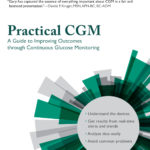The Work of Managing Diabetes and What is CGM

Jill: The theme for National Diabetes Month this year is Managing Diabetes – It’s Not Easy, But It’s Worth It. What does this mean to you?
Gary: That’s a great summation! I tell my clients something similar: Living with diabetes is a general pain-in-the-ass, but it beats the hell out of having diabetes and NOT living. It does take work – we have to monitor, count, calculate, analyze, and prepare for almost everything we do throughout the day. But the benefits are rich: Improving glucose control allows us to feel and perform better RIGHT NOW. It improves our physical performance, intellectual abilities, and emotional status immediately.
Better blood glucose control means feeling better NOW-@GaryScheinerClick To TweetJill: What do you tell people who may be struggling with their diabetes management?
Gary: I tell them, “join the club.” All of us who live with diabetes have our share of ups and downs. And that’s OK. You don’t have to hit a home run every time up to be considered and all-star. But if the highs and lows are happening far too often, look for answers. Certified Diabetes Educators (CDEs) are in a unique position to help.
Jill: Yes, trying to hit a home run or trying to be perfect all the time is a sure way to set yourself up for failure. Your practice is unique. How can people reach out to you?
Gary: If you want the guidance of a team of CDEs who lives with diabetes personally, contact my practice. We work with people worldwide via phone and the internet.
Jill: You’ve written several outstanding books about diabetes. Let’s talk about your book Practical CGM. What is a CGM and who can benefit from using one?
Gary: CGM is an abbreviation for Continuous Glucose Monitoring. CGM systems include three parts: a tiny metallic sensor worn just below the skin, a transmitter that sends a signal based on impulses generated by the sensor, and a receiver that displays the glucose data and emits alerts to users letting them know if they are heading into high or low ranges. Just about anyone who is at risk of hypoglycemia can benefit from CGM due to the early warnings that they provide. It is also very helpful to know the direction one’s blood sugar is heading, in addition to the actual number, for making better daily management decisions.
Jill: Can people with type 2 diabetes benefit from using a CGM?
Gary: Absolutely, Jill. As I mentioned, anyone who is at risk of hypoglycemia – including those who take insulin, sulfonylureas or meglitinides – can certainly benefit. CGM allows us to be more aggressive with our treatment, lower the A1c, without experiencing more lows. In addition, those with type 2 diabetes can utilize something called “professional” CGM. This is a system borrowed from your healthcare provider’s office so that you can see/learn what your glucose patterns are like throughout the day and night.
People with type 1 and type 2 diabetes benefit from a continuous glucose monitor-@GaryScheinerClick To TweetJill: Any drawbacks to using a CGM?
Gary: A few… there is usually some cost involved. Almost all private insurances cover them, but there are often copays or deductibles that must be met. Medicare does not cover them yet, but hopefully that will change soon. The sensors themselves are painless and easy to insert, but having to wear something on your skin for days or weeks at a time, regardless of how small it is, can be viewed as a drawback. And on occasion, the CGM may not produce accurate results. This can cause false or missed alarms.
Jill: What is one of the biggest myths you see that people with diabetes hold?
Gary: Probably the biggest myth I hear is that there is a conspiracy to keep a cure from reaching the people who need it. Curing diabetes is very complicated, very expensive, and a very drawn-out process. We’re making strong, steady progress on both the biological and biomechanical fronts. Continue to support organizations such as JDRF in these efforts.
Gary Scheiner, MS, CDE is owner and clinical director of Integrated Diabetes Services, LLC in Wynnewood, PA. He was awarded 2014 AADE Diabetes Educator of the Year. Follow him on Twitter and Facebook.
Filed Under: Diabetes
Tagged: blood sugar, CGM, Diabetes Month, Gary Scheiner
Jill Weisenberger
I'm Jill, and I believe simple changes in your mindset and health habits can bring life-changing rewards. And I don't believe in willpower. It's waaaay overrated. As a food-loving registered dietitian nutritionist, certified diabetes care and education specialist and certified health and wellness coach, I've helped thousands of people solve their food and nutrition problems. If you're looking for a better way to master this whole healthy eating/healthy living thing or if you're trying to prevent or manage diabetes or heart problems, you'll find plenty of resources right here.
Leave a Reply
Welcome to my Blog
Hi there! I'm Jill, a nutrition & diabetes expert and the author of 4 books.

I believe simple changes in health habits can bring you life-changing rewards.
And I believe willpower is way overrated.
Right here is where you can discover the mindset and habits to stick with healthy lifestyle choices most of the time - and drop the guilt when you don't.
Get the Second Edition!

Featured Posts









